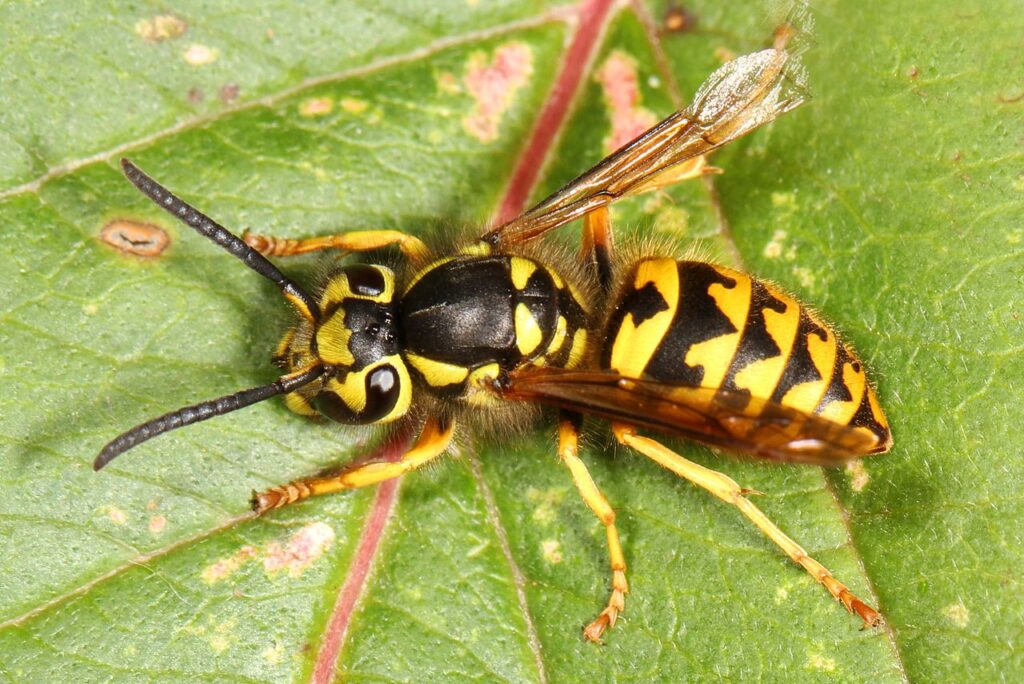
Identification and Nesting Habits
Yellow jackets, scientifically known as Vespula squamosa, are easily recognizable by their striking yellow and black coloration. Typically measuring about 1 inch in length, they share a resemblance with umbrella wasps, though yellow jackets can be distinguished by their more robust, spindle-shaped abdomen. These social wasps construct larger nests than solitary species, consisting of multiple “combs” arranged side by side. A single yellow jacket nest can house as many as 10,000 individuals, making them a formidable presence in your yard.
Yellow jackets often build their nests underground in abandoned rodent burrows, although they can also be found in tree hollows or under eaves. The nests may be partially visible when the soil is disturbed, revealing the underlying comb structure.
Behavior and Life Cycle
Yellow jackets are social insects that work collaboratively to build and maintain their nests. The queen, having mated in the fall, emerges in spring to establish a new colony. She lays eggs and provides protein-rich food from captured insects to the larvae. As the first brood matures into worker wasps, they take over foraging and nest expansion, allowing the queen to focus solely on egg-laying.
During late summer, the colony’s dynamics shift. The production of new queens and males begins, while the older workers die off as the season progresses. By fall, the remaining wasps abandon the nest, leaving it unoccupied for the winter.
Why Yellow Jackets Can Be a Concern
While yellow jackets play a role in controlling pest populations, their aggressive behavior can pose a threat to humans, particularly when they feel their nest is threatened. Their stings are painful and can trigger severe allergic reactions in sensitive individuals. As scavengers, yellow jackets are often attracted to food at outdoor gatherings, increasing the likelihood of encounters with humans.
Control and Prevention
Preventing yellow jackets from becoming a nuisance involves careful monitoring and management. If you notice an influx of these wasps in your yard, it’s essential to act swiftly. The safest time to treat yellow jackets is during dusk or nighttime when they are less active. Wearing protective clothing, such as gloves and a bee veil, can help reduce the risk of stings.
Consider using baited traps near areas of high activity to control their population. If you suspect a yellow jacket nest on your property, contacting a pest control professional for safe removal is often the best course of action.
Some Tips for Yellow Jackets
To maintain a yellow jacket-free zone in your outdoor spaces, keep food covered during picnics, dispose of garbage promptly, and seal potential nesting sites around your home. Regular inspections and proactive measures can help ensure your yard remains a safe and enjoyable place for family and friends.
For more information on safety around wasps, visit the U.S. National Park Service’s helpful page.
If you suspect a yellow jacket infestation or need assistance with pest control, don’t hesitate to reach out to our experienced team for effective solutions!
